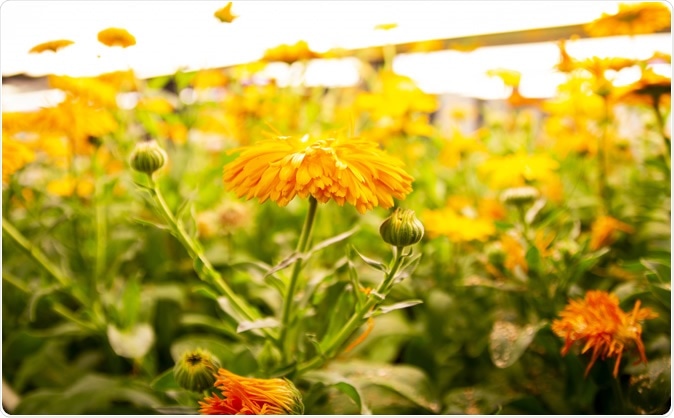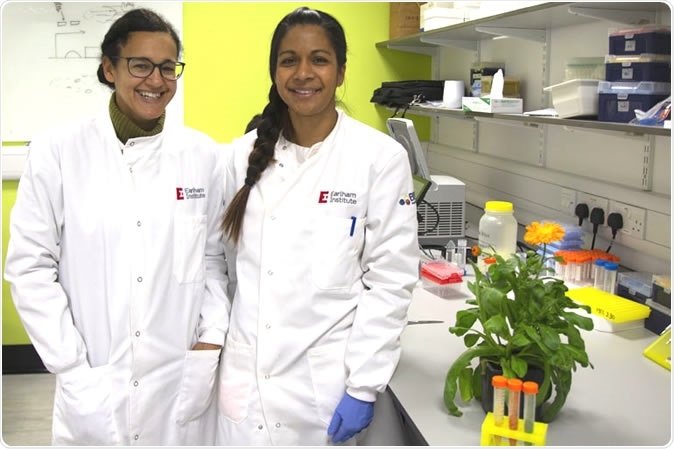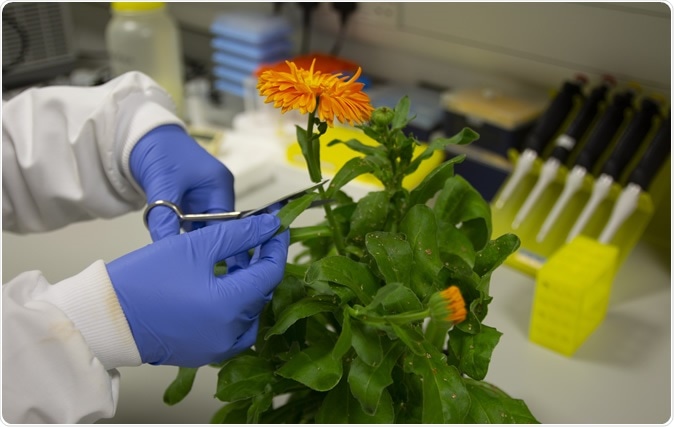We eat plants, wear their products, burn them for fuel, and use them to build our houses. Plants are the very basis of the food chain on earth. They are also the source of oxygen in the atmosphere, and a treasure house containing a host of compounds that have biological effects on the body. Some of these chemicals are produced as self-defence, to guard against pests and diseases. Others attract insects and micro-organisms to aid plants to accomplish various parts of their life cycle such as reproduction.

Daisy family (Asteraceae). Image Credit: Earlham Institute (EI)
The Earth BioGenome Project is a massive effort to discover the DNA sequence of all known plant, animal and fungal species on earth, numbering about 1.5 million species. It involves a host of partners, including the Earlham Institute (EI). This research institute specializes in genomics and computational biology. It has an advanced DNA sequencing laboratory that offers multiple workflows, that complement each other in producing an accurate picture of the genome. It also has a very large computer section that is focused on European computational life science research.
This institute is contributing to the UK arm of the Earth BioGenome Project, dubbed the Darwin Tree of Life Project in the UK, which aims to sequence all 66,000 UK plant and animal species. As part of this work it is looking at plant genomes to uncover new medicinal substances from plants.
There is a long tradition of using plants as medicine. For instance, aspirin came from the bark of the willow tree, which was used to soothe pain because, as was later discovered, it contained salicylic acid. Acetyl salicylic acid, which is aspirin, is the modern wonder drug for pain and inflammation, but is built upon a folk remedy.
Paclitaxel is a chemical used to treat cancer, which comes from some species of yew. Digitalis comes from the foxglove plant and is used to relieve the weakness of the heart in some conditions.
Camomile, garlic, ginger, turmeric, ginseng, gingko and mint are among the numerous other medicinal plants that have been used over generations for their healing properties. Yet scientists have hardly touched the edges of the riches available in the way of healing compounds in plants.

Dr. Nicola Patron and Dr. Melissa Salmon, EI. Image Credit: Earlham Institute (EI)
Endangered plants
In many parts of the world, there are plenty of foxgloves and several willow species to serve as a source of these medicinal compounds. The issue is that the switch from vast meadows of hay to intensive grassland farming has caused the near-extinction of a great many species of valuable medicinal plants.
This spurred the present study to examine plants in the UK, record their diversity, and find out which genes encode molecules that could serve medical purposes or be of industrial use. The beginning point will be with Asteraceae, the plant family that includes the common daisy. Over 900 species from this family are known to exist in the UK. Some of these are part of folk medicine and have been shown to have antifungal and cytotoxic properties. Many species such as Arnica and Calendula have been demonstrated to have wound healing properties as well. Researchers have managed to find some of the molecules that confer bioactive properties on these plants.

Daisy family (Asteraceae). Image Credit: Earlham Institute (EI)
The researchers want to carry out biochemical characterization of the various plant chemicals in these species, and to sequence the genome to trace the genes responsible for their production. The aim is to find out what makes plants capable of manufacturing this type of complex chemical compound, and to use this knowledge to synthesize these molecules using biological systems in the future.
Implications
Researcher Nicola Patron says of her study, “It can help us to identify and make new molecules for use in health and industry. By linking data about the chemicals being made and the genes being expressed, we will be able to identify unknown chemical diversity as well as the genes used for their biosynthesis.”
Other scientists chime in, expressing satisfaction with the way genome sequencing is proving to be immensely useful in turning nature to use for the common good of all people. EI director Neil Hall says, “My hope is that in the next ten years we will have sequenced the vast majority of plant genomes, unlocking a treasure trove of pathways that make compounds which can be used in medicine and biotech.”